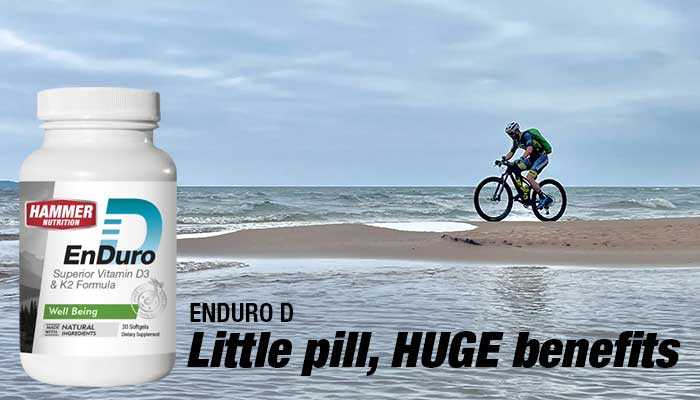
BY DR. BAYNE FRENCH, MD DC
Traditional teaching and my educational understanding until recently was that uric acid (UA) is an inert byproduct of metabolism. Its importance is only in regard to kidney stones and gout.
Like solid evidence on proper human nutrition, literature on the metabolic detriments of UA has been around for decades. Yet it is the rare medical provider that knows this, nor is it anywhere in large-scale nutritional guidelines.
It seems to me the fastest way for knowledge on metabolic wellness to be known and understood by the individual where it matters most is for visionary authors to write books. Individuals then read these books and enact change. This change is then spread horizontally to those they care about and others that observe the favorable changes. Basically, bypass the vertical trickled down of bastardized and erroneous information that ends up in the shape of a pyramid or a plate. It just takes an eternity to go from the laboratory into the literature and disseminate into clinical medicine in a way meaningful to patients. Even upon arrival to a clinical setting, your medical provider may not be aware of it, is likely mired in dogma, and just overworked and surly. So don’t wait.
Case in point, Scottish physician Dr. Haig described the connection between UA levels and a wide array of diseases, from depression and migraine to cancer, dementia, and heart disease, over 100 years ago. He wrote a book on it that went through seven editions and was translated into numerous languages. And this knowledge is JUST NOW making it into clinical practice. Barely.
I first wrote about UA in a Nonalcoholic Liver Disease article published in part on 8/21 EN 127 and unabridged in ENW. I expounded on it in EN 128 (and ENW) Laboratory Testing article. Rumblings about metabolic impairments driven by UA were heard by me a few years ago, and I wanted to know more because metabolic impairment drives most of our chronic diseases.
Dr. David Perlmutter MD wrote Drop Acid, published in February 2022. The book itself is terrific, and I recommend everyone read it. I owe him an outstanding debt of gratitude for his work and my subsequent knowledge. The citations provided at the back of the book are particularly appreciated. Authors like Dr. Perlmutter, Dr. Mark Hyman, and others have well-referenced work. Their cited references have expedited my knowledge of metabolism and metabolic disorders. Much of this article is based on Dr. Perlmutter’s work.
What is Uric Acid Anyway?
UA is an organic compound consisting of carbon, nitrogen, oxygen, and hydrogen:

UA is made from only THREE sources: fructose, alcohol, and purines. The final step in UA production involves the enzyme xanthine oxidase. Medications that lower UA target this enzyme. There are natural inhibitors of this enzyme as well, primarily phytonutrients in many fruits and vegetables.
The amount of UA in the body reflects how much is made and how much is excreted from the body. Lifestyle improvements resulting in a healthier metabolism result in less UA made and more excreted.
The ideal uric acid level is less than 5.5. With lifestyle improvements, considerable reductions in less than a month are common.
What is Gout?
UA, in its crystalline form, may precipitate in joints. Under the microscope, these crystals look truly formidable in their needle-like form. It is a brutally painful condition.

Get your blood tested, and if you have elevated UA, this article applies to you! Those with elevated levels but no apparent symptoms from it have asymptomatic hyperuricemia. This has traditionally been blown off as being insignificant.
The incidence of gout is surging. It more than doubled in the United States from the 1960s to the 1990s. This increase runs parallel to that of obesity, diabetes, and other metabolic diseases. These increases parallel the increase in the primary substances that trigger elevated uric acid, sugar-sweetened food and drink.
Whether you are afflicted with gout or not, elevated UA drives the formation of insulin resistance, elevated blood sugar, type 2 diabetes, elevated blood pressure, distorted cholesterol, systemic inflammation, and weight gain. It is directly implicated in a large percentage of all-cause mortality, especially cardiovascular disease (Chen et al. Arthritis & Rheumatology Feb 2009).
The evidence between elevated UA and metabolic mayhem is strong enough that it is considered an independent risk factor. This means that on its own, elevated uric acid corresponds with disease.
Elevated UA and Survival:
UA directly results in fat formation. Long ago, this provided us with a survival advantage. Due to survivalistic pressures, our fore-people were more prone to starvation avoidance. Not starving to death makes creating children more of a possibility.
We are highly efficient at storing fat. We are also programmed to be insulin-resistant. This state, where insulin does not work well, assures our brains will continue to get enough glucose for reasoning, problem-solving, and foraging—also important stuff for makin babies.
The key mechanistic reason for our ability to store fat and become insulin-resistant is the absence of an enzyme called uricase. Uricase converts uric acid into other compounds to be easily expelled by the kidneys. It is found in many animals but not us.
Less uricase > more uric acid > more fat, higher blood pressure, insulin resistance > better survival > baby makin
Let’s look at this fascinating phenomenon through the actions of fructose, one of the top two most powerful stimulators of uric acid formation. Gorging on fruit resulted in large amounts of fructose consumption. Uric acid levels then elevated, and “fruit to fat” conversion was achievable. I have some strange penchant for bears. Or they for me. I’ve been charged by several of them and have emptied cans of bear spray on some of them, saving me from disfigurement. I’ve often wondered how a bear can be 200 pounds in the spring and 400 pounds in the fall when huckleberries are thick. Now I know. They, too, have genetically silenced uricase.
Are you starting to realize that our survivalistic mechanisms are durable? But our environment is not? This results in a mismatch. Indeed, scientists are terming this evolutionary/environmental mismatch, which explains much of the metabolic mayhem I see daily in clinical practice.
Uric acid is formed from only three substances:
1) Sugar and Fructose:
Sugar (sucrose) is a disaccharide, meaning it has two pieces linked together. These pieces are glucose and fructose. In the intestine, sugar is acted on by the enzyme sucrase, separating it into glucose and fructose, which are then absorbed into the bloodstream.
Fructose also occurs naturally in fruit, agave, honey, and some vegetables. Unprocessed fructose-containing foods have relatively low amounts. The fiber and phytonutrients within them cause the fructose to be absorbed slowly and counteract the formation of UA (by inhibiting the enzyme xanthine oxidase).
High fructose corn syrup (HFCS) is NOT naturally occurring. It is over 50% fructose and as high as 65%. It was developed in 1957 at Oklahoma State University. Fortunately, it took until the early 70s to make it into our food. I was a baby then, cute little me. In 1984, both Coca-Cola and Pepsi changed from sucrose to HFCS.
HFCS is so biologically active and metabolism perturbing that finding evidence of Fatty Liver Disease in regular soda drinkers is almost predictable. This includes endurance athletes.
Ayoub-Charette et al. (BMJ Open. May 2019) examined over 150,000 people. A strong relationship was found between sugar-sweetened beverages and elevated uric acid and gout. No association was found between whole fruit consumption and gout.
Although sugar and high-fructose sweetened beverages and fruit juice are the primary causes of excessive body fructose, it is important to know that sauces, cereals, yogurt, baked goods, pastries, dressings, and many other processed foods are replete with sugar and fructose. Disallow them from becoming staples. Your primitive brain will fight you on this.
The glucose piece of sugar elevates blood sugar, spiking insulin and driving the formation of fat. Over time, insulin elevation leads to insulin resistance and eventual Type 2 diabetes.
Let’s take a look at the titles of a couple of great articles I’ve read: Fructose and Sugar: A Major Mediator of Nonalcoholic Fatty Liver Disease (Jensen et al. J Hepatol. May 2018) and Carbohydrate Intake and Nonalcoholic Fatty Liver Disease: Fructose as a Weapon of Mass Destruction (Basaranoglu et al. Hepatol Surg, Nutr. April 2015)—mass destruction leading to a pandemic without any real leadership. Maybe vaccination will fix it.
2) Alcohol:
Alcohol is metabolized similarly to fructose, described in detail later. It uses our primary energy molecule ATP, resulting in AMP, creating UA. Also, when the kidneys are busy dealing with alcohol, they will eliminate less UA.
But not all alcohol affects UA formation the same. Wine, in women, is associated with a decline in UA. In men, there is no measurable effect. Bummer. I’ll just try harder.
Beer is particularly bad and represents a triple-whammy for UA formation:
1. The alcohol in beer
2. The high amounts of carbs in beer (light beer excluded)
3. Beer possesses a high amount of purines
3) Purines:
Within each of our tens of trillions of cells is genetic material, our DNA. Four nitrogen-containing compounds called nucleotides (adenine, guanine, cytosine, and thymine) are linked together like words in a sentence. These sentences are instructions on how to make proteins.
Two of these nucleotides, adenine, and guanine, are considered “purines”. We make them in our body (endogenous) and eat them (exogenous). The end product of metabolizing these purines is UA. We do this metabolism in our liver, blood vessel lining, and intestines. Anything that causes tissue damage will result in the liberation of our own purines.
Abundant sources of purines in foods, many of which are quite healthy, are as follows:
- Seafood
- Meats
- Grains
- Beer
- Beans
- Vegetables
- Dairy
- Soy
As Zgaga et al. explains (PLOS ONE. 2012), several purine-rich foods (like cauliflower, spinach, and mushrooms) may not actually trigger UA elevations. Yu et al. (Asia Pac J of Clin Nut. 2018) performed a large meta-analysis to determine the relative risk of certain foods causing gout:
Increased risk: Alcohol (158%); fructose (114%); seafood (31%); red meat (29%)
Decreased risk: Dairy (44%); coffee (24%); soy (15%); vegetables (14%)
Interestingly, the reduced UA and risk of gout seen with coffee is observed in men only. This makes it even for the wine thing. In women, coffee can actually increase UA slightly but does not increase the risk of gout.
The canned advice from most medical providers to patients with gout is to eat a low-purine diet. I’m afraid I have to disagree. If they ate more anchovies, they’d be leaner and without abdominal obesity and insulin resistance. Many purine-rich foods are an excellent source of protein and fat. The low-hanging fruit here is sugar/fructose, excess carbs, and beer. And losing weight. Hard to put all that advice in a can, though. That would use up the entire four minutes you have with your doctor.
References:
Chen et al. Arthritis & Rheumatology. Feb 2009
Ayoub-Charette et al. BMJ Open. May 2019
Jensen et al. J Hepatol. May 2018
Basaranoglu et al. Hepatol Surg, Nutr. April 2015
Zgaga et al. PLOS ONE. 2012
Yu et al. Asia Pac J of Clin Nut. 2018
Johnson et al. Scientific America. 2015
Johnson et al. JAMA. 2008
Spiga et al. Arter, Throb, and Vas Bio. June 2017
Ruggiero et al. Am J of Card. July 2007
Rothenbacher et al. PLOS ONE. 2012
Billiet et al. Rheumatology. 2014
Wang et al. Diabetes. Dec 2013
Douard et al. J of Phys. Jan 2013
Lanaspa et al. PLOS ONE. April 2015
Lanaspa et al. Natl Acad of Sci. Mar 2018
Moller-Levet et al. Proc of the Nat Acad of Sci. Mar 2013
Mullington et al. Best Pra & Res Clin Endo & Metab. Oct 2010
Univ of Chicago Med Center. ScienceDaily. Dec 2004
Borght et al. Regulatory Peptides. Feb 2011










7 comments
Thanks for this timely article. Have a friend suffering from gout and sent it his way.
———
Hammer Nutrition replied:
Hi Mark, it’s our pleasure and thank you for sharing it with others. BDF
Great article! Will get drop acid to further my knowledge on UA as I have monitored mine for years with issues Thanks again!
I just read Dr Richard Johnson’s book “The Fat Switch”. According to him, uric acid is the fat switch and corroborates what is in this article by Dr French.
———
Hammer Nutrition replied:
Hello David, thank you for the comment and book reference. I’ve already ordered a hard copy and audio book as well.
Thank you, i suffer from high levels of UA if i don’t manage the beer and fructose intake. Great article , i also got the audio book “Drop Acid” by David Perlmutter . Looking forward to that listen ! (On a run or cycle)
———
Hammer Nutrition replied:
Hi Jeff, thank you for the candid feedback and book reference. Dr. Perlmutter is another great resource for those wishing to get off the sugar/acid/grain/gluten merry go round! BDF
Thanks for your expertise! My basic understanding of body chemistry was greatly increased by your practical knowledge.